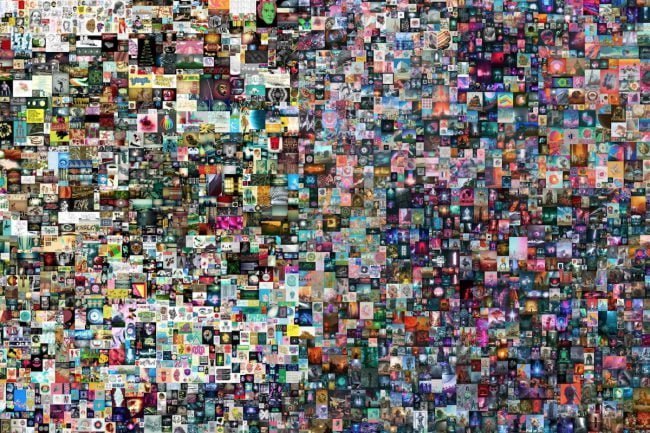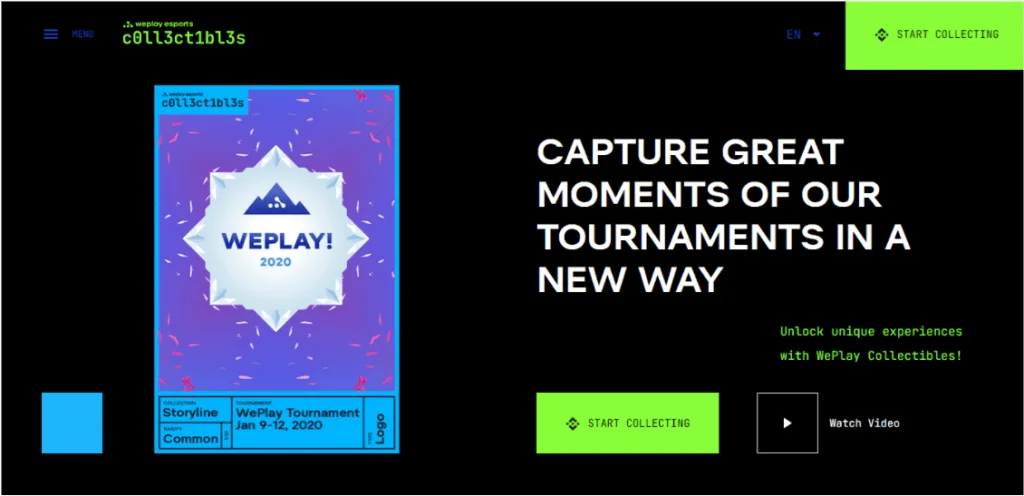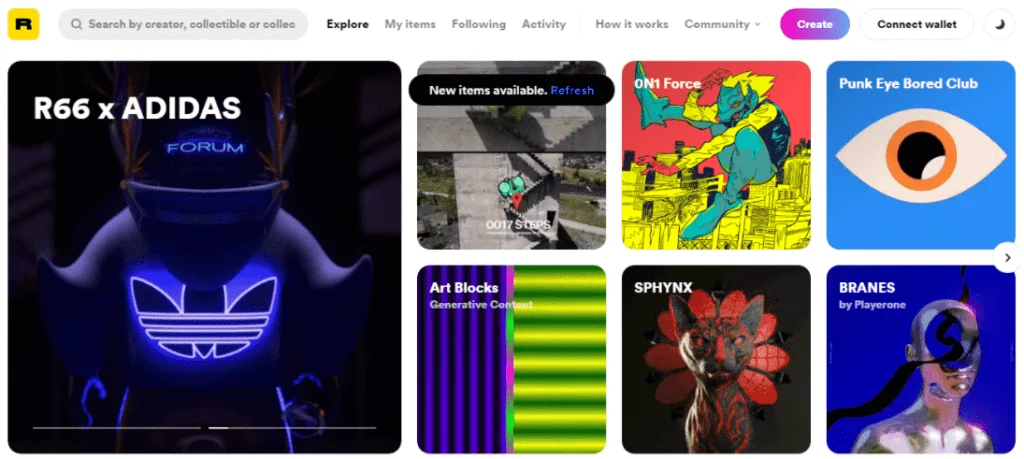NFTs can be used to gain access to exclusive content, new products, or upcoming events by purchasing them. With their exponential growth, they are poised to revolutionize data transmission and interconnectivity.

Non-fungible tokens (NFTs) are a type of data storage used by the blockchain. Exclusive access and rewards are provided to those who own this work of art, which contains the data.
In NFTs, there are no middlemen to deal with. As a result of blockchain technology, businesses and entrepreneurs can sell NFTs without distributing tickets to the audience or community.
An additional benefit of NFTs is that content creators will be able to connect with the community by selling tokens for exclusive content and creating unique pieces of work.
It is impossible to copy or replicate these works of art. To begin with, they were designed to protect or copyright the work of artists.
What Is A NFT? What Is It Used For?
An NFT is a digital asset that represents physical objects such as art, music, in-game items, and videos. They are purchased and sold online, frequently with cryptocurrency, and are typically encoded with the same underlying software as many cryptos.
Fungible assets are those that can be exchanged for other fungible assets, such as cryptocurrencies like Bitcoin. For example, a Pokémon card is unique, but it cannot be merged with any other. To trade it for another Pokémon card, you’ll get an item with entirely new meanings, attributes, and properties to deal with.
In the same way that Bitcoin (BTC) can be fractionated into smaller units called Satoshis, NFTs are stored in the digital ledger technology known as the blockchain, but with a difference: each NFT (or non-fungible token) is unique and cannot be exchanged for another NFT.
NFT is a brand-new way to verify the authenticity of digital content such as art, music, memes, avatar skins, GIFs, and tweets as well as physical objects: NFT is a new format for digital authenticity certification. It uses a blockchain, a type of security protocol, to turn any digital file into something unique and unreplaceable.
Because of its one-of-a-kindness, Christie’s auctioned off digital artist Beeple’s Everydays: The First 5000 Days for $69 million. Beeple created the work as a collage of 5000 digital images between May 2007 and January 2021.

How Are NFTs Used?
For the issuance of digital and crypto collectible items, NFTs are used by decentralized applications (DApps), blockchain projects, and protocols. The tokens can be anything in the real world, from a collectible item to an investment product.
It is nothing new for video games to have economic systems. NFTs and blockchain, in general, make it easier to tokenize gaming assets because many online games already have their economies. Non-fungible tokens, on the other hand, maybe a solution to inflation, a problem that plagues many online games today.
With cryptocurrencies like Ether (ETH), gamers can buy rare and valuable video game items and turn them into NFTs.
People who want to be a part of Esports events and show that they uniquely appreciate players can purchase tokens from companies such as WePlay Collectibles, which are also used for merchandising. If you want to buy art or items with NFT technology, the WePlay Collectibles are part of a platform where you can do so digitally and physically. These are items and rewards that are tied to a particular tournament.

How Does NFTs Change Art?
In streaming music, photography, dance, film, television, and more recently the internet and all digital media, art displays itself in the digital age, NFTs fit perfectly into this context.
NFTs in the arts have a wide range of potential applications. A digital art collection is what is drawing the most attention at the moment because NFTs allow you to have a digital painting, video, or song.
NFTs give their owners the authorship of the original work of art, even if it is freely available on the internet. For instance, anyone can own a piece of Vincent van Gogh’s art, but only one person will be able to sell it for thousands and millions of dollars in the future.
NFTs simplify the process of collecting royalties when a song or image is used. Using a JPG, you can no longer pay royalties to the artist because the file format makes it impossible to determine who created it. You can use the NFT token to make a direct payment to the artist. However, independent artists can now sell their work as non-financial transactions (NFTs) for real money.
NFTs open the door to new business models that were previously unavailable. If the value of their work increases, artists and content creators can attach clauses to an NFT that guarantee them a percentage of the profits each time it is resold.
Using new art platforms, it is now possible to identify the digital work’s copyright holder quickly and easily. There are no copyright or originality issues when the artwork is purchased on an NFT platform and displayed in an online gallery because the NFT and blockchain ensure that ownership is authentic.
What Can NFTs Be Used For In The Future?
The non-fungible token projects, like DeFi (Decentralized Finance), have begun issuing governance tokens, hence allowing the holder to vote on company decisions using this token type. DeFi has seen the rise of governance tokens, and many believe NFTs will follow in their footsteps.
Other marketplaces may follow Rarible’s lead and issue their tokens, just like Rarible did with its NFT governance token. There is a wide range of uses from there.

NFT technology is now a business model for the art market, thereby replicating the auction house model on a much larger scale in the virtual world. It is a way for artists to strengthen the ownership of their works and increase the potential for selling and buying them.
Non-fungible tokens, on the other hand, have a potential that extends far beyond these fields, as they fundamentally alter the concept of ownership. Intermediaries are commonly used in transactions in which ownership is transferred, contracts are exchanged, and money is transferred to and from each other. Eventually, none of this will be needed using NFT. This is owed to the fact that the information cannot be altered as transactions on the blockchain can be trusted.
As a replacement for lawyers and deposit accounts, smart contracts can be used to ensure that money or assets are transferred while both parties adhere to their contracts. To be able to move freely within this system, NFTs turn assets into tokens.
While this new technology has already been adopted by virtual worlds, another interesting use of this technology is the conversion of real-world assets into digital tokens. Using NFTs, real-world assets can be stored and traded on a specific blockchain in a non-fungible token form. In many markets, this could provide much-needed liquidity that otherwise wouldn’t exist. Examples include works of art, property, and rare collectibles.
For this new financial technology to work, assets must be converted into tokens. The real estate market, for example, could be completely transformed as a result of this. NFTs may also be able to assist in resolving issues related to land ownership. Only wealthy individuals around the world are thought to have land and property rights that are officially documented. People who lack clear legal rights have a much harder time getting loans and credit. NFTs will also be used to buy and sell things in the future if the real world is replaced by virtual worlds.
Do NFTs Have Value?
Scarcity, exclusivity, authority, and collecting are all things that humans enjoy.
Christie’s sold a collection of nine punks for $16.9 million in May 2021. Meanwhile, with the help of digital artists and the Nifty Gateway NFT platform, Sotheby’s has become the second major art world brand to get in on the NFT game.

A new digital art collection sold by Sotheby’s auction house for $17 million was called The Fungible Collection. More than $1 million has been offered for some works of art, such as the 3D work “The Switch,” which the artist plans to alter at some point in the future.
To make their limited edition works available to the public, artists such as Grimes and Logan Paul have launched their own flagship NFTs.
The value of an object, like that of any other valuable possession, is derived from the opinions of those who place a high value on it. “Value” is, in essence, a shared belief. As long as people believe something has value, it doesn’t matter what kind of currency is used, or it’s medium of conveyance. Why would digital collectibles be any different from other valuable items?
NFTs are digital artifact certificates that are both cryptographically registered and endowed with a single, distinct value. Trading in NFTs is available on several different platforms, including OpenSea (a cryptocurrency exchange) and Rarible (a rare goods marketplace). NFT markets connect buyers, collectors, and sellers or artists directly, and each NFT token has a distinct value.
Conclusion
Even though they have been around since 2014, NFTs are gaining popularity as a popular way to buy and sell digital artwork. Since November 2017, a whopping $174 million has been spent on NFTs.
Essentially, NFTs create digital scarcity, which contrasts sharply with the vast majority of digital creations, which are almost always infinite in supply. Cutting off supply should theoretically increase the value of a given asset, assuming it is in demand.

